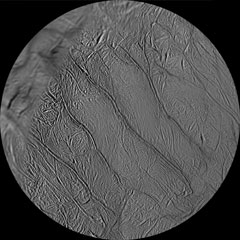This map shows the South Pole of Enceladus. Enceladus is a moon of Saturn. Can you see the huge "tiger stripe" cracks in this view? They go from upper left to lower right across the map.
Click on image for full size
Image courtesy of DLR and NASA/JPL/Cassini Imaging Team.
The South Pole of Enceladus
Enceladus is an icy moon of Saturn. The South Pole of Enceladus is one of the strangest places in the Solar System.
There are several huge cracks in the surface of Enceladus near its South Pole. The cracks are more than 100 km (62 miles) long. These giant cracks have been nicknamed "tiger stripes". Strangely, the South Pole of Enceladus is the warmest place on the moon. The areas near the tiger stripes are warmest of all. What is going on there?
Scientists think there might be underground lakes or seas of liquid water. Something is heating the area near the South Pole, keeping the water from freezing. Some of the water makes it to the surface of the moon through cracks. When it does, it erupts from geysers as ice crystals!
The ice from the geysers is thrown hundreds of kilometers above the surface of Enceladus. Some ice crystals leave the moon and go into orbit around Saturn. The ice makes up part of one of Saturn's rings! Some ice falls back onto Enceladus. This makes the moon very bright and shiny, as if it were covered with fresh snow.
You might also be interested in:
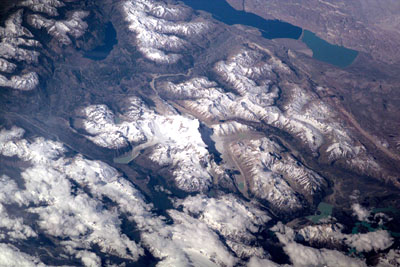
This picture was taken from high above our planet. Looking at the Earth from very far away like this we can see that some parts of our planet look light in color, and some parts look dark. The color of
...more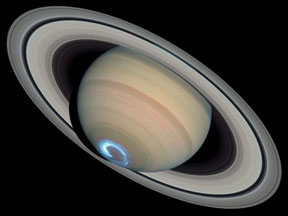
There's a lot of strange stuff going on at both the North and South Poles of Saturn. Two of Saturn's moons also have interesting polar regions. Let's take a look! The atmosphere and clouds are quite odd
...more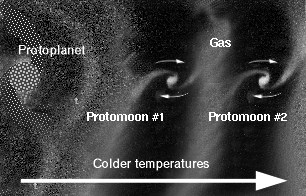
Titan is like other icy moons. Scientists want to know "how come Titan is the only one that has a big atmosphere?" Titan formed the same way other planets did, as shown in this picture. Where Titan formed,
...more
The air of Titan is a lot like the Earth's, except that it is very cold, from -330 degrees to -290 degrees! Like the Earth, there is a lot of Nitrogen and other complex molecules. There also may be an
...more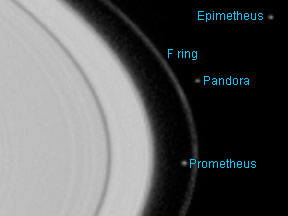
Pandora is a small moon of Saturn. It was discovered by S. Collins and others in 1980 from photos taken by the Voyager 1 spacecraft. Pandora's name comes from Greek mythology. Pandora was the first woman,
...more
Prometheus is a small moon of Saturn. It was discovered by S. Collins and others in 1980 from photos taken by the Voyager 1 spacecraft. This moon's name comes from Greek mythology. Prometheus was a Titan
...more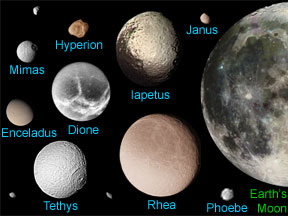
Saturn has // Call the moon count function defined in the document head print_moon_count('saturn'); moons. Many of those are tiny chunks of rock or ice only a few kilometers (miles) across. One of Saturn's
...more


